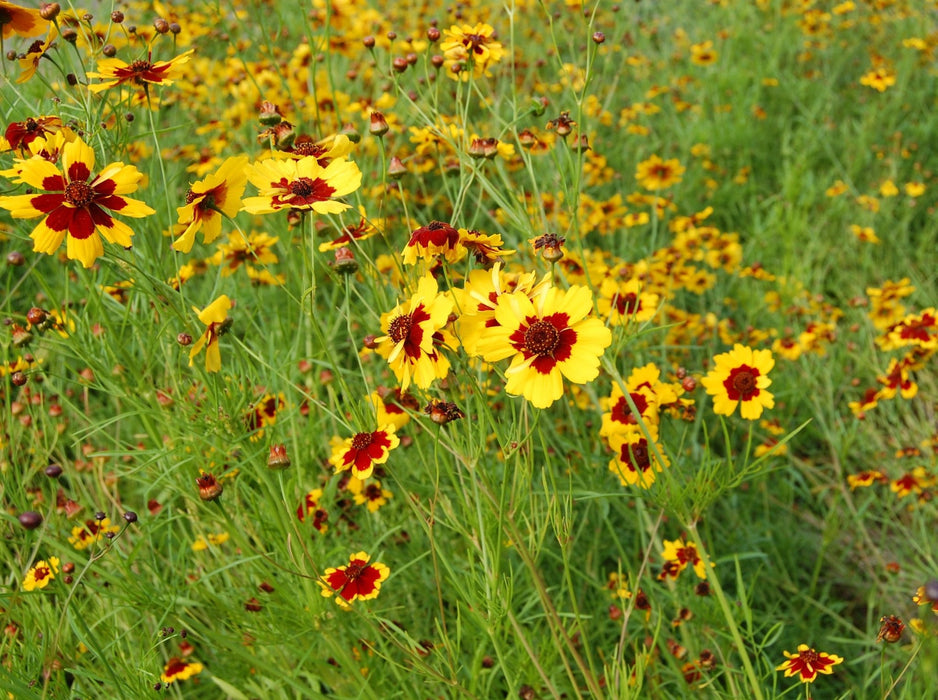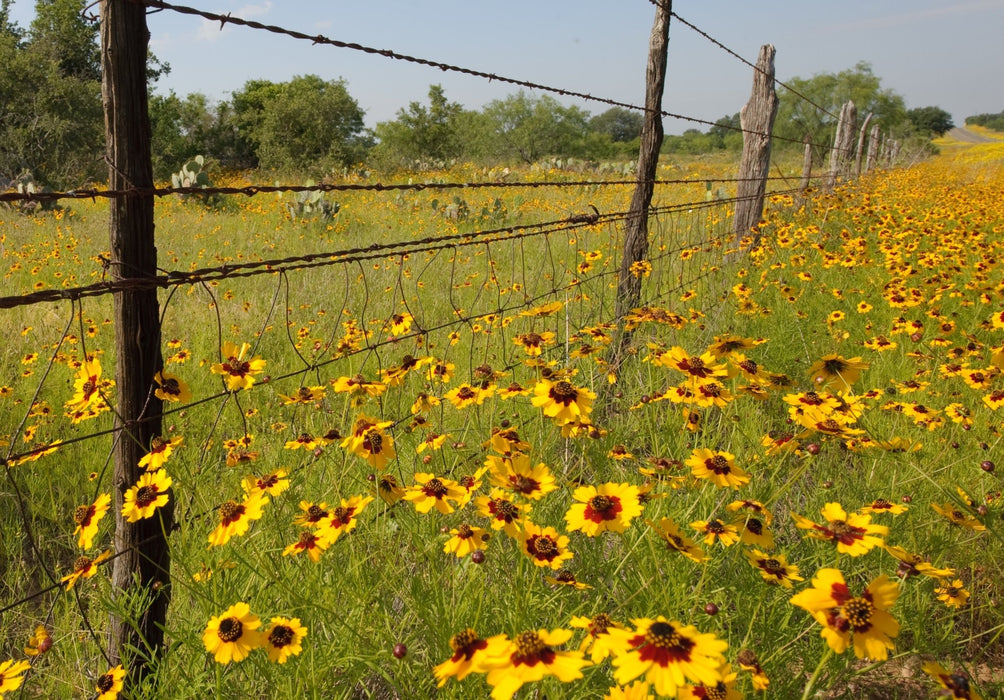
Plains Coreopsis Seeds (Coreopsis tinctoria)
Sometimes called dyer’s coreopsis, or dyer’s tickseed for its longstanding use as a wild dye plant, creating a range of deep-reddish-brown to yellow pigments, depending on the flower petal segments selected for use.
This is largely a plant of the inland West, occurring across a vast expanse from southern inland British Columbia to the Gulf Coast of Mexico.
It’s an annual species, frequenting recently disturbed ground: buffalo wallows, eroded badlands gulches, and remote highway verges where is sometimes appears among packed gravel and among cracks in asphalt as interstate trucks roar by at 60mph.
We love this plant for it’s cheerful early morning flowers – often bright yellow with intense red centers - although fully red and fully yellow flowers also both occur. It’s closely associated with wild long-horn bees (genus: Melissodes), with females foraging among the flowers for nectar, while full-on clustered encampments of single males sometimes cling to the stems overnight, awaiting the warmth of dawn and the appearance females.
This is a great species for overseeding arid scab lands (along with Lewis flax, yarrow, and Rocky Mountain bee plant) to add color and wildlife value.
Or --- even in non-arid climates this is a handy addition to vegetable gardens where it can be planted in rows to attract pollinators and beneficial insects such as minute pirate bugs and lady beetles (good companion species for this kind of annual planting include large-flowered collomia, and lacy phacelia).
Approx. 400-500 seeds (0.2 grams).

